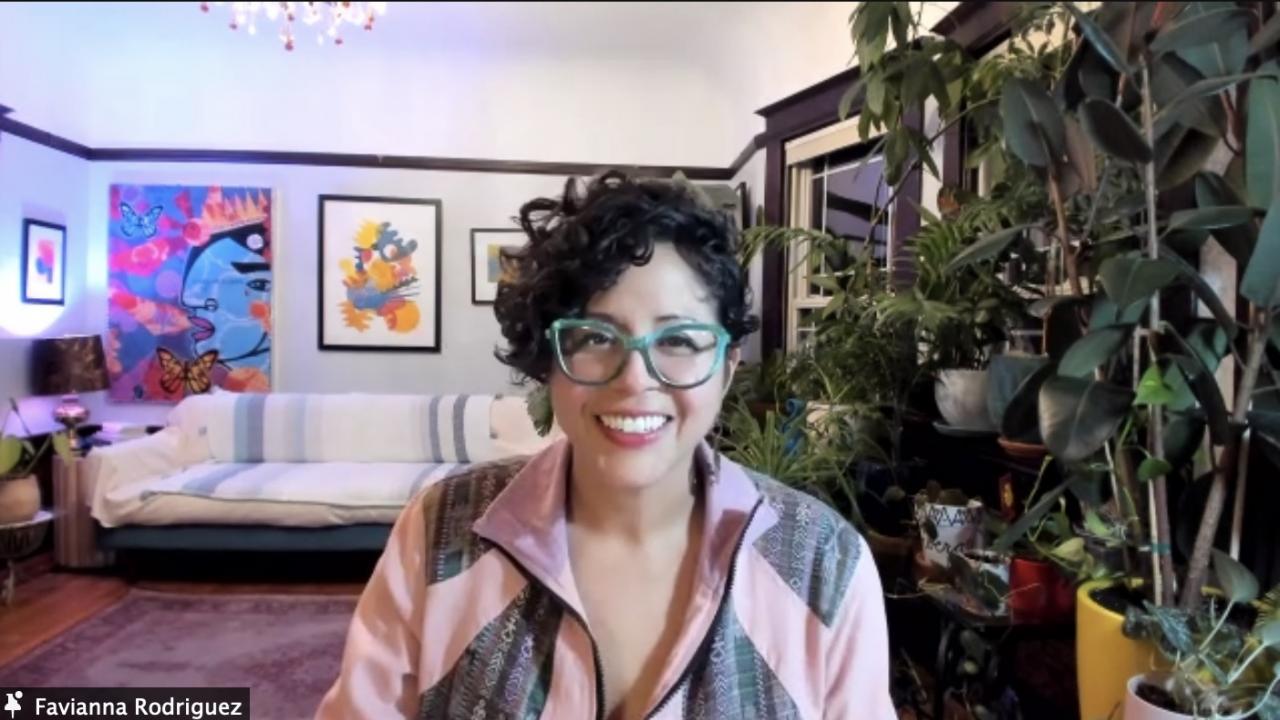By Michelle Villagomez
Favianna Rodriguez, an interdisciplinary artist, cultural strategist, and social justice activist based in Oakland, in a recent Zoom online event walked attendees through a presentation of her many works. She began by saying “My work is really based on the idea that culture is power.”
The event, The Art of Liberation: A Conversation with Favianna Rodriguez, was hosted by SFMOMA on Feb. 18 in partnership with City College of San Francisco (CCSF) and as part of a lecture and workshop series that precedes the Diego Rivera exhibit in 2021 at SFMOMA.
The series was organized by CCSF faculty for students to gain better access to contemporary artists who, like Rivera, create art for social change. Amy Díaz-Infante, a faculty in printmaking design and drawing at CCSF, was in conversation with Favannia Rodriguez.
Rodriguez’s talk addressed the intersection of art and social justice. She told the attendees “politics is actually the manifestation of an idea whose time has come,” therefore ideas must permeate a culture before they have the potential to create political change.
“As culture creators, as storytellers, we have the ability to shape culture through our stories, through our images, and through our songs. Regardless of where we grew up or what our conditions might be, we all have the capacity to create something, to disrupt narratives and help people see a different way.” Rodriguez said.
As a daughter of Peruvian immigrants, specifically Afro-Peruvian from her father’s side, Rodriguez discussed the lack of representation of her people both in her Oakland community — the majority of people were Chicanos — but especially in the media. Rodriguez said that art was a place where she would express herself and re-imagine her future. Many years later in 2015, she would go on to create Freedom. Justice. Voice. Power, in which she celebrates the indigenous Afro presence across Latin America.
Discovering posters as art
Rodriguez grew up in Oakland in the late 1970s. In addition to all the violence in the area, she said, her community was affected by police brutality, gangs, food insecurity, and environmental racism, to name a few. At the young age of 15, Rodriguez became an activist. She explained that her choice to be a paper-based artist has to do with her beginnings as a young activist, surrounded by political posters. She understood that through posters — in this case, digital posters — she could have her art appear everywhere.
A shift in Rodriguez’s work
Rodriguez began her journey as an artist in the year 2000, and for about 10 years her work focused on the failures of systems, such as police brutality and war.
The year 2010 was a turning point for her art career, she said. Rodriguez’s piece Migration is beautiful is one of her most well-known works and highlights that her work today is about the “Yes.” Migration is beautiful is a digital-based poster that has a vibrant yellow and orange background and at the center depicts a multicolored monarch butterfly. She explains that instead of writing “no borders,” this piece reads “migration is beautiful” and shifts the attention to the interconnectedness of the human experience — moving from one place to another. The two faces inside the wings recall people who migrate, and they are connected by the body of the monarch butterfly which is symbolic of the beauty of migration.
Rodriguez touched on her experience traveling and getting to witness the contributions that people of color had in the art world. She claims that such exposure shaped her aesthetics and inspired her to use vibrant colors, textures that recall Peruvian fabrics, and faces similar to those found in the Maya and Aztec codices.
Breaking away from traditions
In the talk, Rodriguez recalled how her mom was not receptive to her dropping out of college to pursue art, but that eventually, her mom was proud of everything she had accomplished. Rodriguez encouraged young attendees to follow their dreams, “Just follow what you want to do, your parents will come around, but don’t waste time,” she urged them. Díaz-Infante added, “I think the most prideful thing that we can do to repay their [grandparents or parents that immigrated to the United States] sacrifice, is to own our own choices.” Díaz-Infante referred to Rodriguez’s point about culture and said, “We ourselves are culture makers so we define what the culture is and it needs to shift and adapt with us.”
